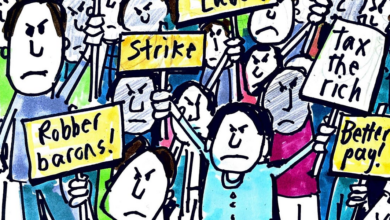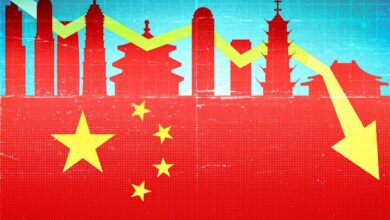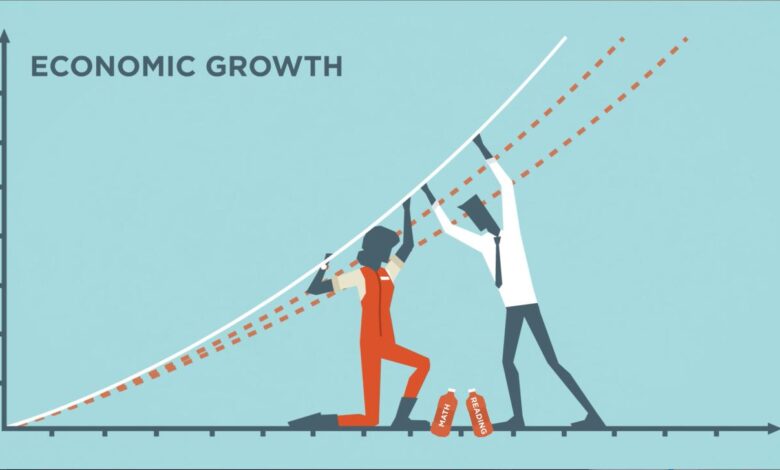
Is Higher Inequality the Price America Pays for Faster Growth?
Is higher inequality the price America pays for faster growth? This question has fueled intense debate for decades, with economists and policymakers grappling with the complex relationship between economic expansion and income disparity. We’ll explore the historical trends, examining periods of rapid growth alongside widening inequality gaps, and delve into the roles of technological advancement, globalization, and government policies in shaping this dynamic.
Understanding these interwoven factors is crucial to crafting effective strategies for future economic prosperity.
This exploration will analyze data spanning the last fifty years, revealing correlations and attempting to discern causation. We’ll investigate the impact of technological disruption on job markets, specifically focusing on the widening gap between high-skill and low-skill wages. The influence of globalization and trade policies, including their benefits and drawbacks regarding income distribution, will also be examined. Finally, we’ll consider the role of government intervention through taxation, regulation, and social safety nets, evaluating their impact on both growth and equality.
Economic Growth and Inequality
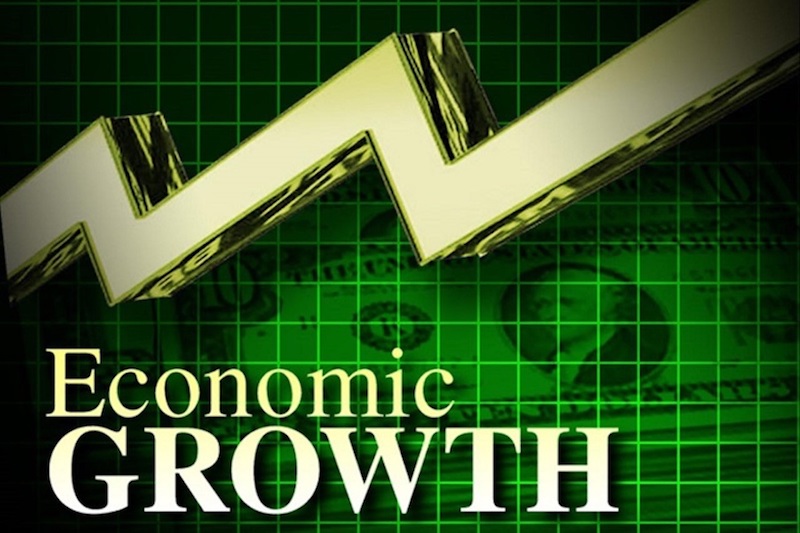
The relationship between economic growth and income inequality in the United States is complex and has been a subject of intense debate for decades. While periods of robust economic growth have often been accompanied by rising inequality, the causal link remains unclear, with various economic forces and policy decisions playing significant roles. Understanding this historical interplay is crucial for formulating effective economic policies aimed at promoting both growth and equitable distribution of wealth.
Economic Growth and Inequality: A 50-Year Overview
The following table presents a simplified overview of the relationship between GDP growth, income inequality (measured by the Gini coefficient), and major economic policy shifts over the past five decades. It’s important to note that the Gini coefficient, ranging from 0 (perfect equality) to 1 (perfect inequality), is just one measure of income distribution, and other metrics might offer slightly different perspectives.
Furthermore, economic changes are rarely isolated to a single decade, and the effects of policies often unfold over longer periods.
| Decade | GDP Growth Rate (Average Annual) | Gini Coefficient (Approximate) | Major Economic Policy Changes |
|---|---|---|---|
| 1970s | 3.2% | Increasing | Stagflation, deregulation in some sectors, rise of globalization. |
| 1980s | 3.1% | Increasing | Reaganomics (tax cuts, deregulation), increased financialization. |
| 1990s | 3.0% | Stable to slightly increasing | Dot-com boom, NAFTA, continued globalization. |
| 2000s | 1.8% | Increasing | Housing bubble, financial deregulation, tax cuts. |
| 2010s | 1.6% | Stable to slightly increasing | Recovery from the Great Recession, quantitative easing, increasing income stagnation for many. |
Data sources for this table include the Bureau of Economic Analysis (BEA) for GDP growth and the U.S. Census Bureau for Gini coefficient estimates. The Gini coefficient data is an approximation as precise annual figures are not consistently available across the entire period.
Periods of Growth and Inequality Convergence/Divergence, Is higher inequality the price america pays for faster growth
The 1980s, under Reaganomics, exemplifies a period of relatively strong growth accompanied by a notable rise in income inequality. Tax cuts disproportionately benefited higher-income earners, and deregulation may have contributed to increased income disparities. Conversely, the 1990s, while experiencing solid growth, saw a relatively stable or only slightly increasing Gini coefficient, potentially due to factors like the dot-com boom creating jobs across different income levels.
The 2000s, however, witnessed slower growth alongside a further increase in inequality, largely attributed to the housing bubble and subsequent financial crisis, which disproportionately impacted lower and middle-income households.
Correlation vs. Causation in Growth and Inequality
The observed correlation between economic growth and income inequality does not automatically imply causation. Some argue that faster growth
- can* lead to increased inequality, as the benefits of growth may not be evenly distributed, with high-skilled workers and capital owners disproportionately benefiting. Others contend that inequality itself can
- hinder* growth by reducing aggregate demand and investment, as a large portion of the population lacks sufficient purchasing power. Still others posit that both growth and inequality are driven by underlying factors like technological change, globalization, and policy choices, with no direct causal relationship between the two. The debate highlights the multifaceted nature of economic development and the need for nuanced policy interventions.
The Role of Technological Advancements: Is Higher Inequality The Price America Pays For Faster Growth
Technological advancements have profoundly shaped the American economy, acting as a double-edged sword impacting both economic growth and income distribution. While innovation fuels productivity and expands overall wealth, its effects on different segments of the workforce are uneven, contributing significantly to the widening income gap. This uneven impact stems from the nature of technological change itself, favoring certain skill sets and rendering others obsolete.Technological advancements have fueled significant economic growth in the US, particularly since the late 20th century.
The rise of computing power, the internet, and automation have increased productivity across numerous industries, leading to higher overall output and economic expansion. However, this growth hasn’t been equally distributed. The benefits have disproportionately accrued to those with the skills and education to adapt to and leverage these new technologies, while others have faced job displacement and stagnant wages.
Impact of Technology on High-Skill vs. Low-Skill Jobs
The impact of technological change varies dramatically depending on the skill level required for a particular job. High-skill workers, possessing advanced education and specialized expertise, generally benefit from technological advancements. These advancements often augment their productivity, allowing them to accomplish more in less time and command higher wages. Conversely, low-skill workers, often employed in routine or manual labor, are more vulnerable to automation and technological displacement.
So, is higher inequality the price of faster growth in America? It’s a complex question, and honestly, one that feels increasingly relevant as I watched the passionate energy at on a mission to rescue the america we love highlights of trump rally in north carolina , where economic anxieties were palpable. Ultimately, I think finding a balance between economic dynamism and equitable distribution of wealth is the real challenge facing our nation.
Their jobs are more easily replaced by machines or software, leading to lower wages or unemployment.
So, is higher inequality the price America pays for faster growth? It’s a complex question, and honestly, sometimes I feel overwhelmed trying to untangle all the factors. The recent news about the potential for Antifa violence in Portland, as reported in this article gabriel nadales antifa violence feared in portland saturday group must be condemned and exposed , highlights how societal divisions can erupt into very real consequences.
This kind of unrest certainly doesn’t contribute to a sense of shared prosperity, which makes me wonder even more if the current economic model is truly sustainable in the long run.
| Characteristic | High-Skill Jobs | Low-Skill Jobs |
|---|---|---|
| Impact of Technology | Increased productivity, higher wages, increased demand for specialized skills | Job displacement, wage stagnation, increased competition from automation |
| Examples | Software engineers, data scientists, financial analysts | Factory workers, cashiers, telemarketers |
| Education/Training | Typically requires advanced degrees or specialized training | Often requires minimal formal education or training |
| Adaptability | Generally adaptable to new technologies and changes in the job market | Often struggles to adapt to rapid technological changes |
Impact of Automation on Wages and Employment
Automation, a key aspect of technological advancement, has significantly altered the landscape of employment and wages across various sectors. Industries heavily reliant on repetitive tasks or manual labor have been particularly affected. Manufacturing, for example, has seen widespread automation, leading to job losses in traditional factory settings. However, this has also created new jobs in areas like robotics engineering and automation maintenance.
The transportation sector is also undergoing a significant transformation with the rise of self-driving vehicles, potentially impacting the employment of truck drivers and taxi drivers. The retail sector has witnessed the increasing use of self-checkout kiosks and online ordering systems, affecting the employment of cashiers. While automation can increase overall productivity and lower costs for businesses, its impact on employment and wages is complex and often leads to increased inequality as the demand for high-skilled workers who manage and maintain automated systems increases while the demand for low-skilled workers declines.
Technological Progress and Income Inequality: A Cross-National Comparison
While the US has experienced a significant rise in income inequality alongside technological advancements, this phenomenon is not unique. Many developed nations have seen similar trends, although the magnitude and specific manifestations vary. Factors such as social safety nets, education systems, and labor market regulations influence the impact of technological change on income distribution. Countries with stronger social safety nets and robust educational systems often experience less pronounced increases in inequality compared to those with weaker safety nets and less accessible education.
For instance, some Scandinavian countries, known for their strong social safety nets and emphasis on education and retraining programs, have managed to mitigate the negative impacts of technological advancements on income inequality more effectively than the US. However, even in these countries, technological advancements continue to exert pressure on income distribution, highlighting the global nature of this challenge.
The Impact of Globalization and Trade
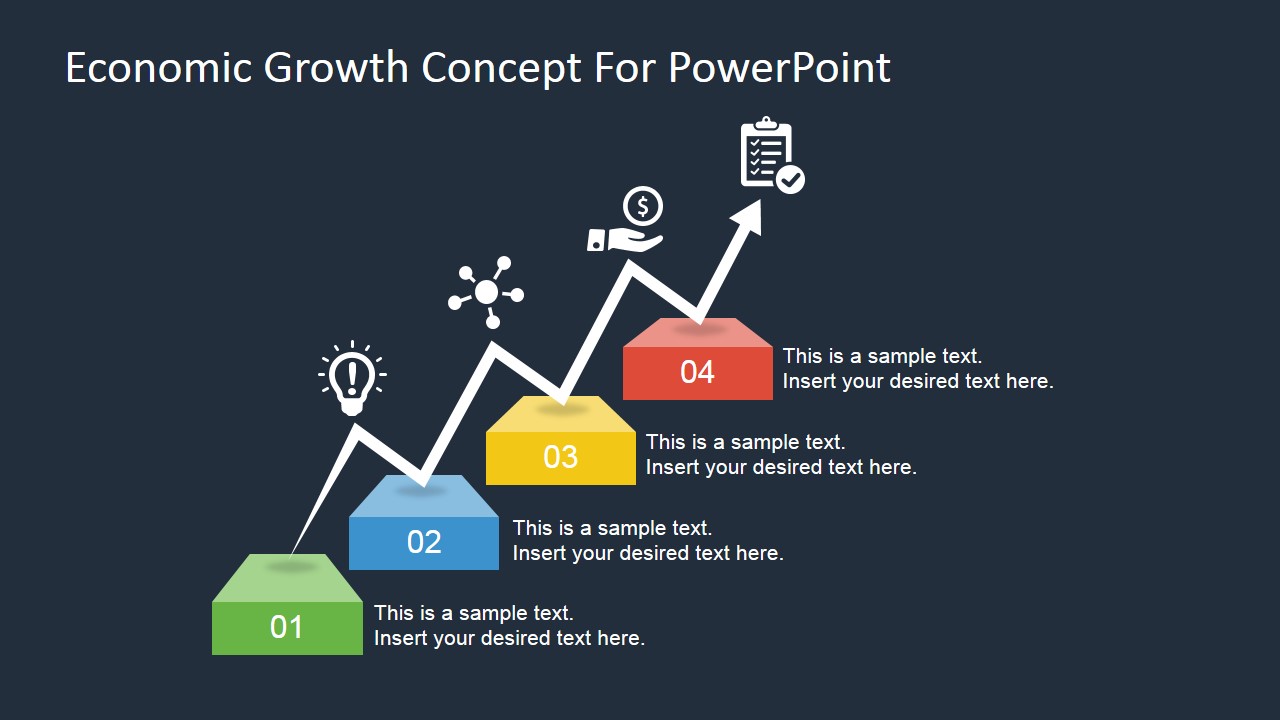
Globalization and international trade have profoundly reshaped the American economy, leading to a complex interplay of economic growth and income inequality. While globalization has undeniably boosted overall economic growth through increased efficiency and access to larger markets, its impact on income distribution has been uneven, exacerbating existing inequalities for some segments of the population. This section explores the multifaceted effects of globalization on both economic growth and income inequality within the United States.Globalization’s influence on the American economy is multifaceted, impacting both the overall growth trajectory and the distribution of wealth.
Increased trade has led to lower prices for consumers, greater access to diverse goods and services, and fostered economic specialization. However, this specialization has also led to job displacement in certain sectors and increased competition for workers, affecting wages and income distribution.
Effects of Globalization on Economic Growth and Income Inequality
Globalization’s effects on income distribution are a subject of ongoing debate. The following points highlight the benefits and drawbacks:
- Pros: Increased economic growth through specialization and efficiency gains; lower consumer prices due to increased competition; greater access to a wider variety of goods and services; potential for increased foreign investment and job creation in certain sectors.
- Cons: Job losses in industries facing global competition; wage stagnation or decline for low-skilled workers; increased income inequality between high-skilled and low-skilled workers; potential exploitation of workers in developing countries.
Industries Affected by Global Competition
Several industries in the United States have experienced significant job losses or wage stagnation due to increased global competition. The manufacturing sector, particularly textiles and apparel, has seen a dramatic decline in domestic production and employment as manufacturing shifted to countries with lower labor costs. The agricultural sector has also faced challenges, with increased imports of agricultural products impacting the livelihoods of American farmers.
Furthermore, the rise of outsourcing in sectors like information technology and customer service has led to job losses in the United States, with these tasks often being relocated to countries with lower labor costs. These shifts reflect a broader trend of companies seeking to minimize production costs in a globally integrated market.
Is higher inequality truly the price America pays for faster economic growth? It’s a complex question, made even more so when you consider the power dynamics at play. Recent revelations, like those detailed in this article about new documents showing clear big tech government collusion , suggest a rigged system benefiting a select few. This kind of collusion might well exacerbate existing inequalities, making the “faster growth” argument far less convincing for many Americans.
Policies to Mitigate Negative Effects of Globalization
A range of policies have been proposed and implemented to mitigate the negative effects of globalization on income inequality. These include:
- Trade adjustment assistance programs: These programs provide support to workers displaced by international trade, such as retraining and job search assistance. While these programs aim to ease the transition for affected workers, their effectiveness is often debated, with concerns raised about the adequacy of funding and the effectiveness of retraining initiatives. For example, the Trade Adjustment Assistance (TAA) program in the US has faced criticism for its limited reach and impact.
- Investments in education and training: Improving the skills and education of the workforce can help workers compete in a globalized economy. Increased investment in STEM education and vocational training can equip workers with the skills needed for higher-paying jobs, potentially narrowing the income gap. However, ensuring equitable access to quality education and training remains a significant challenge.
- Strengthening social safety nets: Expanding social safety nets, such as unemployment insurance and affordable healthcare, can help mitigate the negative impacts of job losses and wage stagnation on vulnerable populations. However, the cost of expanding social programs can be substantial, leading to political debates about the optimal level of government intervention.
- Progressive taxation: Implementing or strengthening progressive tax systems can help redistribute income from higher earners to lower earners, reducing income inequality. However, debates exist regarding the optimal tax rates and the potential impact on economic growth.
The Influence of Government Policies and Regulations

Government policies play a significant, multifaceted role in shaping both economic growth and income inequality in the United States. The choices made regarding taxation, regulation, and social safety nets directly impact the distribution of wealth and opportunities, influencing the overall economic landscape. Understanding these influences is crucial for informed policymaking and for a comprehensive understanding of the complex relationship between growth and inequality.
Government Tax Policies and Income Distribution
Tax policies are a powerful tool for influencing income distribution. Different tax systems redistribute wealth in different ways, impacting both economic growth and equality.
- Progressive Taxation: A progressive tax system levies higher tax rates on higher incomes. This approach aims to reduce income inequality by transferring resources from wealthier individuals to the government, which can then fund social programs or reduce the national debt. Examples include the current US federal income tax system, where higher earners pay a larger percentage of their income in taxes.
The effect on economic growth is debated; some argue it can stifle investment, while others contend that it fosters greater social stability and potentially increased consumer demand among lower-income groups.
- Regressive Taxation: A regressive tax system imposes a higher tax burden on lower-income individuals. Sales taxes, for example, are often cited as regressive because they represent a larger portion of income for lower-income individuals than for higher-income individuals. While regressive taxes can generate significant revenue, they exacerbate income inequality and can limit economic mobility for lower-income households. The impact on economic growth is also debated, with some arguing it stimulates economic activity through increased consumption.
- Flat Taxation: A flat tax system applies the same tax rate to all income levels. While proponents argue for its simplicity and fairness, critics point out that it can lead to increased inequality as it doesn’t account for varying capacities to pay. The economic impact is similarly debated, with arguments focusing on its effects on investment and incentives for work.
Government Regulations and Economic Outcomes
Government regulations, while intended to protect workers and consumers, can also impact both economic growth and income inequality.
- Minimum Wage Laws: Minimum wage laws set a floor for wages, aiming to improve the living standards of low-wage workers. While raising the minimum wage can reduce income inequality and potentially stimulate consumer demand, some argue it can also lead to job losses or reduced hiring, particularly in labor-intensive industries. Empirical evidence on the exact effects is mixed, varying significantly depending on the size of the wage increase and the local economic context.
For example, Seattle’s phased-in minimum wage increase provided mixed results, with some studies showing minimal job losses and others showing more significant impacts.
- Labor Market Regulations: Regulations such as those governing unions, worker safety, and hiring practices can affect income distribution and economic growth. Stronger worker protections can increase wages and benefits for workers, potentially reducing inequality, but may also increase labor costs for businesses, potentially impacting hiring and investment. The overall effect is complex and depends on the specific regulations and the broader economic environment.
Social Safety Nets and Economic Impacts
Social safety nets, such as unemployment insurance and welfare programs, aim to provide a basic level of support for those facing economic hardship.
- Unemployment Insurance: Unemployment insurance provides temporary income support to individuals who have lost their jobs. This helps to mitigate income inequality and prevent extreme poverty, potentially stabilizing consumer demand during economic downturns. However, some argue that it can disincentivize job searching. The overall impact on economic growth is generally considered to be positive due to its stabilizing effect.
- Welfare Programs: Welfare programs, such as food stamps and housing assistance, aim to address poverty and improve the living standards of low-income families. These programs can significantly reduce income inequality and improve health and educational outcomes. However, debates often center on their cost and potential impact on work incentives. The economic impact is complex, with potential benefits in terms of reduced healthcare costs and increased human capital alongside potential costs related to program administration and potential disincentives to work.
Alternative Economic Models and Approaches
The relentless pursuit of GDP growth as the ultimate measure of societal success has left many questioning its sustainability and fairness. This section explores alternative economic models that prioritize equitable wealth distribution alongside economic growth, examining their potential benefits, challenges, and the policy implications involved.The conventional neoclassical model emphasizes maximizing economic output, often at the expense of social equity.
However, several alternative models offer different perspectives, suggesting that a more balanced approach is possible. These models challenge the inherent assumptions of the neoclassical framework and propose different mechanisms for achieving both growth and fairness.
Stakeholder Capitalism
Stakeholder capitalism prioritizes the interests of all stakeholders – employees, customers, suppliers, communities, and the environment – alongside shareholder profits. Instead of solely focusing on maximizing shareholder value, companies adopting this model aim to create long-term value for all stakeholders. This approach fosters a more sustainable and equitable distribution of wealth by ensuring that the benefits of economic growth are shared more broadly.
For example, companies might invest more in employee training and development, pay living wages, and adopt environmentally friendly practices, even if these actions slightly reduce short-term profits. The long-term benefits of increased employee loyalty, stronger customer relationships, and a positive brand image can outweigh the initial costs.
Circular Economy Models
Circular economy models focus on minimizing waste and maximizing resource efficiency. Instead of a linear “take-make-dispose” model, circular economies emphasize reuse, repair, refurbishment, and recycling. This approach not only reduces environmental damage but also creates new economic opportunities in areas such as recycling, repair services, and product redesign. The creation of these new jobs and industries can contribute to a more equitable distribution of income, particularly in communities that are disproportionately affected by environmental degradation.
Consider the example of a company that redesigns its products to be easily disassembled and repaired, creating jobs in repair and maintenance while reducing the need for new production.
Policies Promoting Growth and Equity
Several policy interventions can potentially promote both faster economic growth and a more equitable distribution of income. These include progressive taxation systems, where higher earners pay a larger percentage of their income in taxes; robust social safety nets, providing support for the unemployed and low-income individuals; investments in education and skills training, increasing human capital and improving labor market outcomes; and targeted support for small and medium-sized enterprises (SMEs), which are often more labor-intensive and contribute to local economic development.
However, implementing these policies presents challenges. Progressive taxation might disincentivize high earners, leading to capital flight or reduced investment. Robust social safety nets can be costly, potentially leading to higher taxes or reduced government spending in other areas. Investment in education and skills training requires significant upfront investment with uncertain long-term returns.
Prioritizing Income Equality Over Maximizing Economic Growth
While maximizing economic growth has traditionally been the primary focus, prioritizing income equality presents both potential benefits and drawbacks. Prioritizing equality could lead to a more cohesive and stable society, reducing social unrest and improving overall well-being. A fairer distribution of wealth could also boost aggregate demand, as low-income individuals are more likely to spend a larger proportion of their income, stimulating economic activity.
However, a strong focus on income equality might lead to slower economic growth in the short term, as it may involve redistributive policies that reduce incentives for innovation and investment. The trade-off between growth and equality is a complex one, requiring careful consideration of both short-term and long-term consequences. For example, a country that prioritizes income equality might experience slower GDP growth initially but potentially achieve greater social stability and long-term sustainable prosperity.
The relationship between economic growth and inequality in America is undeniably complex, defying simple answers. While periods of rapid growth have often coincided with increased inequality, establishing a clear causal link remains challenging. Understanding the interplay of technological change, globalization, and government policies is essential for navigating this delicate balance. Ultimately, the pursuit of sustainable economic growth must consider the broader societal implications, striving for a future where prosperity is more equitably shared.


